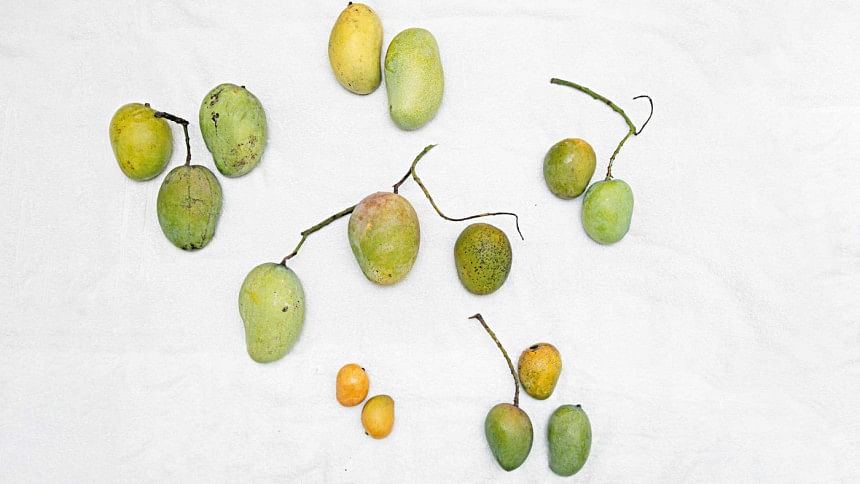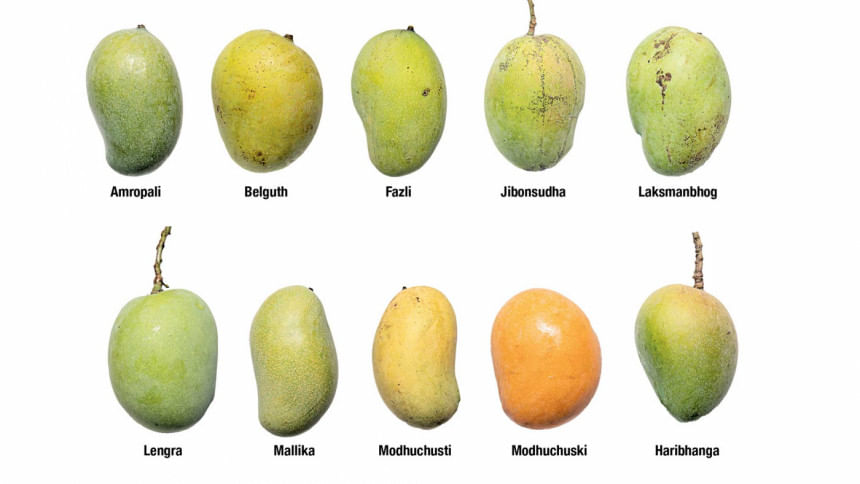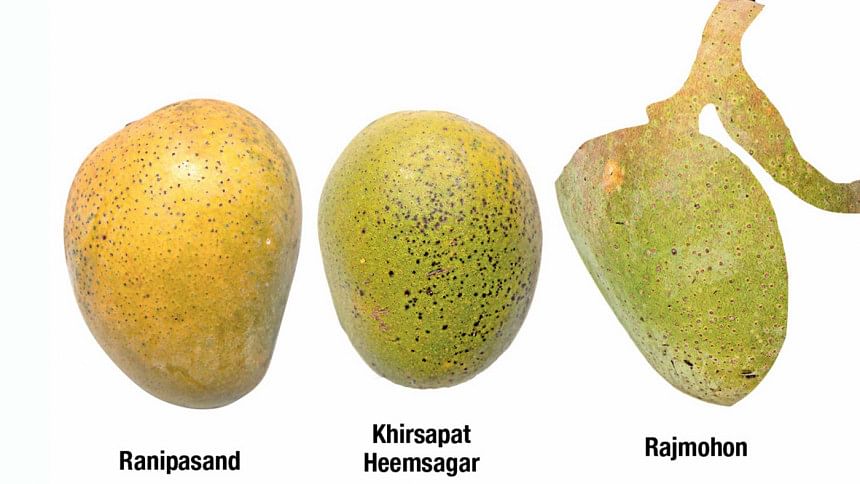More to mango than the himsagar: 300 varieties and counting

Small, fragrant and completely yellow when ripe, the Ranipasand mango was named such after being excessively liked by a visiting British royal during the colonial time, local Chapai Nawabganj folklore says. It is but one delicious mango, and a rather obscure one at that, of the hundreds of varieties of mango that the north-western region in of Rajshahi and Rangpur Bangladesh produce abundantly every summer.
The Ranipasand is a delicate fruit, with a smooth skin and soft flesh, small enough to fit two of them in one palm.
As soon as summer arrives, the wait for mangoes to ripen begins, and the early varieties usually start surfacing in the markets from mid-May.

This year mango output has been less than projected because of unexpected rain conditions and a prolonged winter, as the relatively slower pace of the Kansat and Baneshwar wholesale hubs prove. However, even in those markets, host of visibly different mangoes are offered to buyers as being the famous Haribhanga, Khirsapat, Himsagar, Lengra and such, with baskets and crates and trucks of mangoes arriving and being sold daily, and farmers and businessmen are happy with the demand and prices.
Love for mangoes is fairly widespread in Bangladesh, yet many avid enthusiasts remain unfamiliar with the sheer variety of this fruit as the more celebrated varieties dominate the public psyche. But, Bangladeshi mangoes have much more to offer as nearly 300 varieties are produced in Rajshahi region alone, which holds its ground as the traditional mango hub of Bangladesh and produces about two-thirds of the country's mango output. Some of the areas producing the finest mangoes viz Chapai Nawabganj, Rajshahi, Naogaon, Natore are expected to produce around 4.6 lakh tonnes of mangoes this season, and that is not even counting the production from other large producers like Rangpur and Satkhira.
Amongst the earliest varieties and one of the stars of the mango pantheon is the Gopalbhog, a rounded at the top variety that is medium-sized, fleshy, and smooth textured. The skin of a ripe Gopalbhog is a bit thick and remains greenish around the bottom and appears yellow near the top when ripe.
The most popular and beloved variety of mango is commonly known as the Himsagar, but in Rajshahi it is known as the Khirsapat, and both are thus one and the same in Bangladesh, said Md Habib Al Sadi, mango orchard owner and businessman. This is a really fragrant, deeply sweet smelling medium sized variety with a very smooth and light flesh and a flat seed. It is also the second most cultivated variety in Bangladesh and a GI tagged product of Chapai Nawabganj.
The most famous variety that arrives mid-June is the Lengra, variants of which are also cultivated commercially in India and Pakistan. An average Lengra mango is about 300g, yellow tinted and is known for its sweet taste with a very slight sour after-taste. Interestingly, another contemporary variety called the Lakhanbhog is locally called the "diabetes mango," as it is a tasty but lightly sweet variety, thus presumably "better for diabetics." There is no medical advice behind this, just local assumption. Fazli is the king of mango in terms of sheer size of individual specimen. Very few mangoes can get as huge as Fazlis do normally, and each piece can be a full kilogram!

It is very usual to find as many as 40 or more varieties of mangoes growing in the same garden, and the farmers and workers are keenly aware of each tree and its fruit. The exotic sounding names include Gourmati, Mallika, Chonsa, Modhuchuski, Rajbhog, Kohitur, Jibonshudha, Misrikanto, Bhogla, Surmai, Misribhog, Jhinuk Ashwina, and many more.
The Totapuri mango, for example, is named for its light green colour and a pointed bottom, reminiscent of a parrot's beak. The Golapbash, on the other hand, is so fragrant that it is compared to a rose. One variety known as Bou Shundori, which literally translates to "beautiful wife," is a large sized elongated and fleshy mango variety with a red top and yellower bottom. Despite its fancy name and beauty, it is not popular for direct consumption as it is not as tasty as the other variants, and is more suitable for making secondary mango flavoured products like juices and such. The Baishakhi is called such as it matures really early, and the Batasha is really sweet and light.
Rajmohon, a recently named variant of mango which was earlier considered a nameless local type, which are collectively called "guthi," is one example of many that the general people remain unaware of, said Anwarul Hoque, an ex-forest officer and an enthusiastic mango researcher, who named the variety. He has christened another tiny variant as Modhuchuski, as these mangoes are small like chocolates or candy, and equally sweet. Hoque feels that there are many such varieties that need to be nurtured consciously, to add to the variety and richness of the mango industry. The Gourmati, erstwhile considered a guthi, now sells for up to Tk 400 per kg, as it is a delicious but late harvest and ripens after most other mangoes are already finished for the season.

 For all latest news, follow The Daily Star's Google News channel.
For all latest news, follow The Daily Star's Google News channel. 



Comments